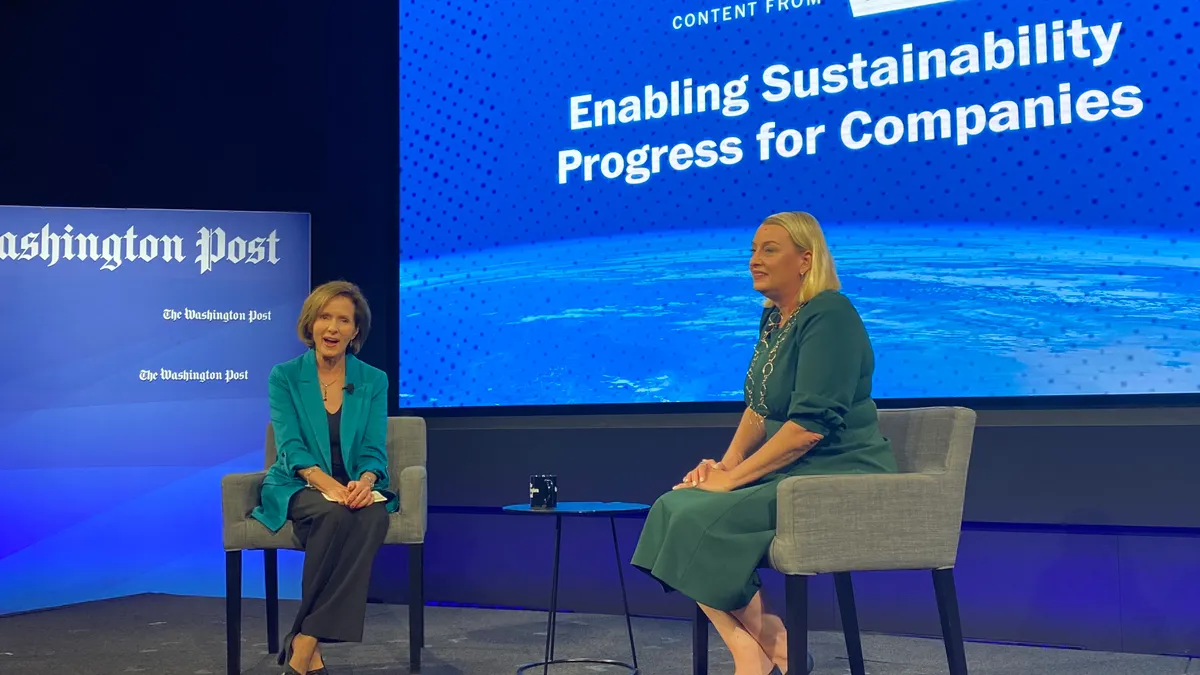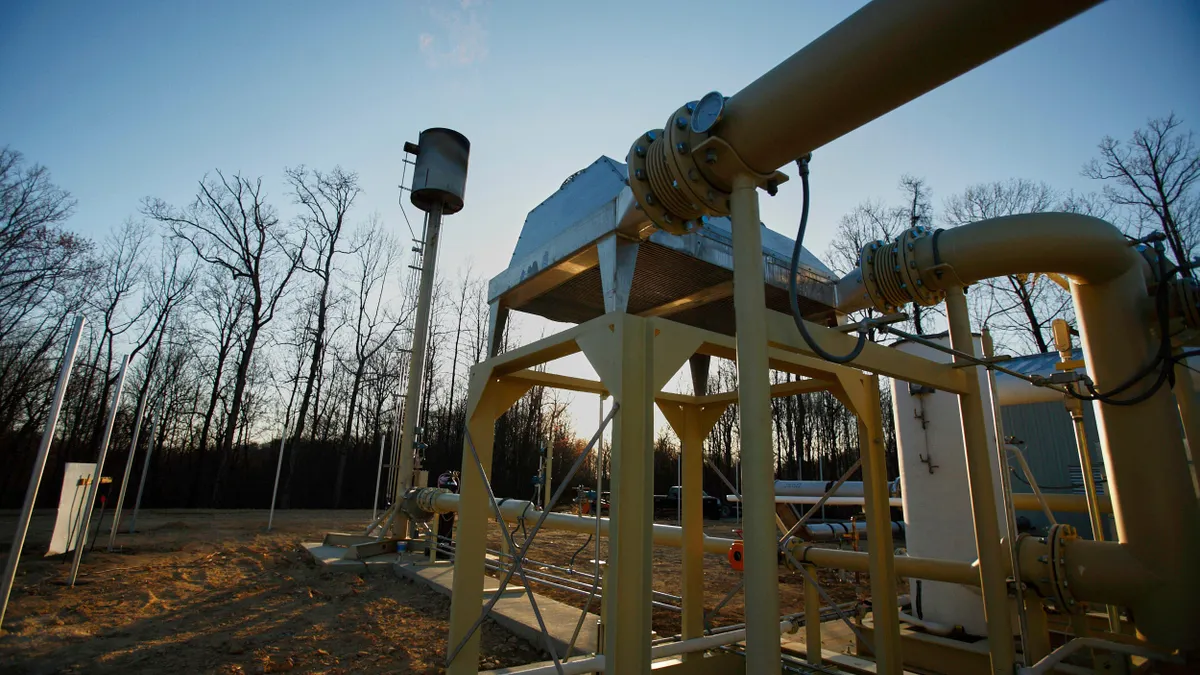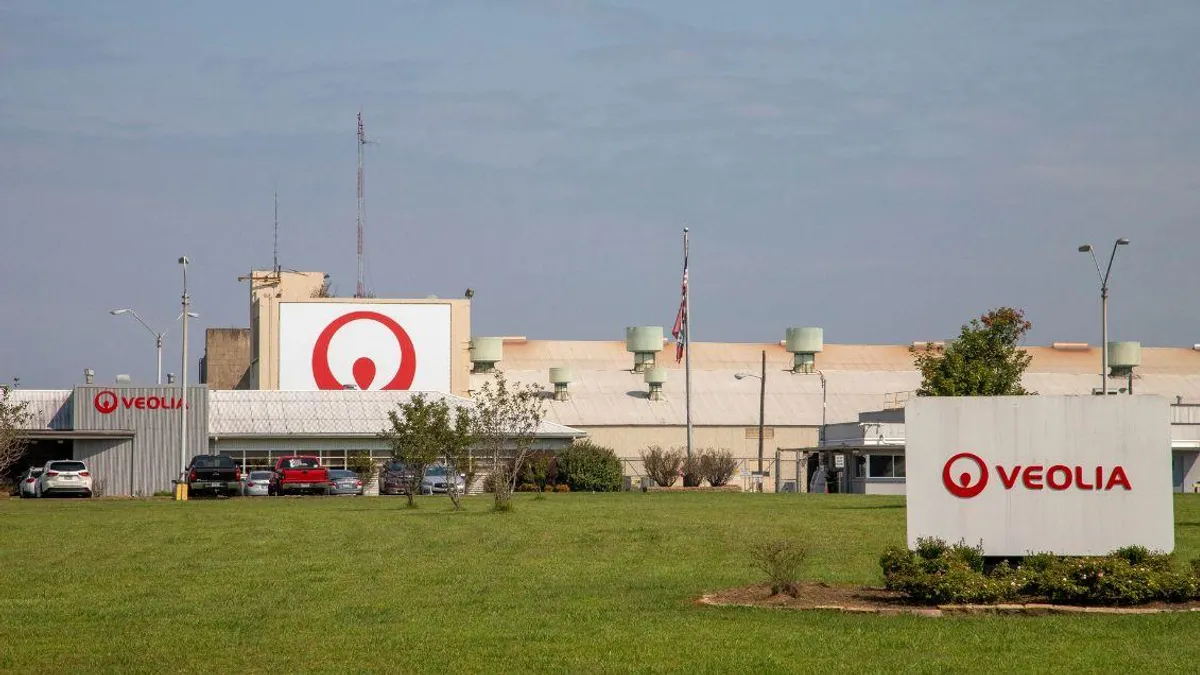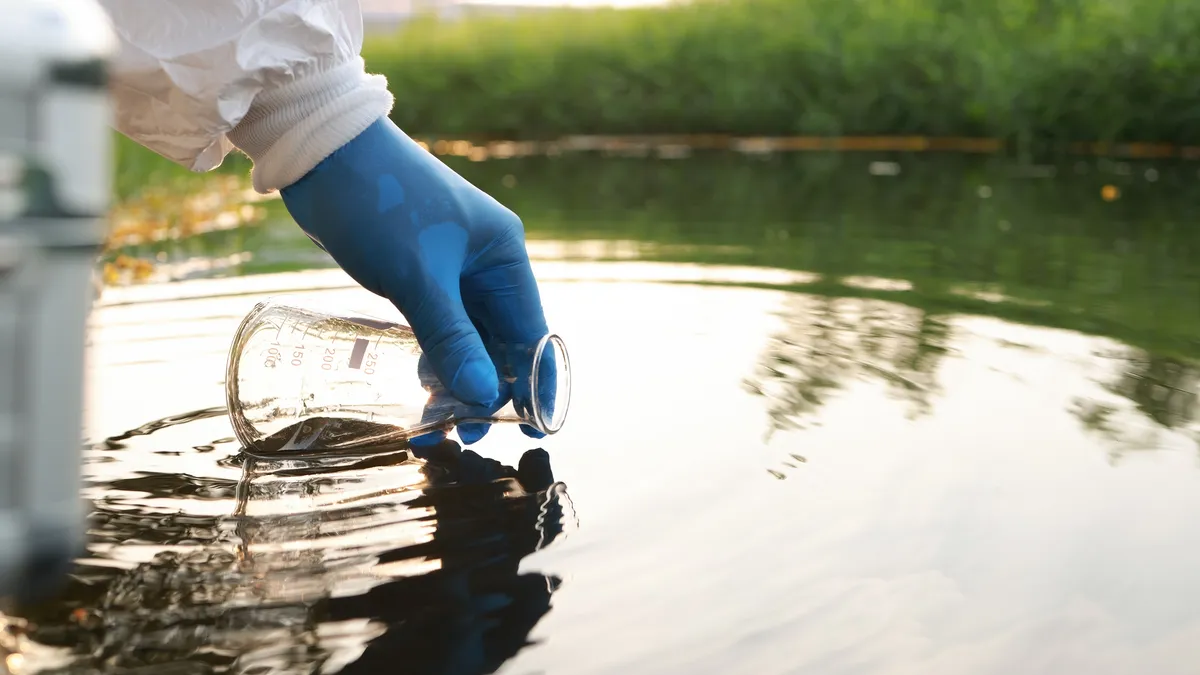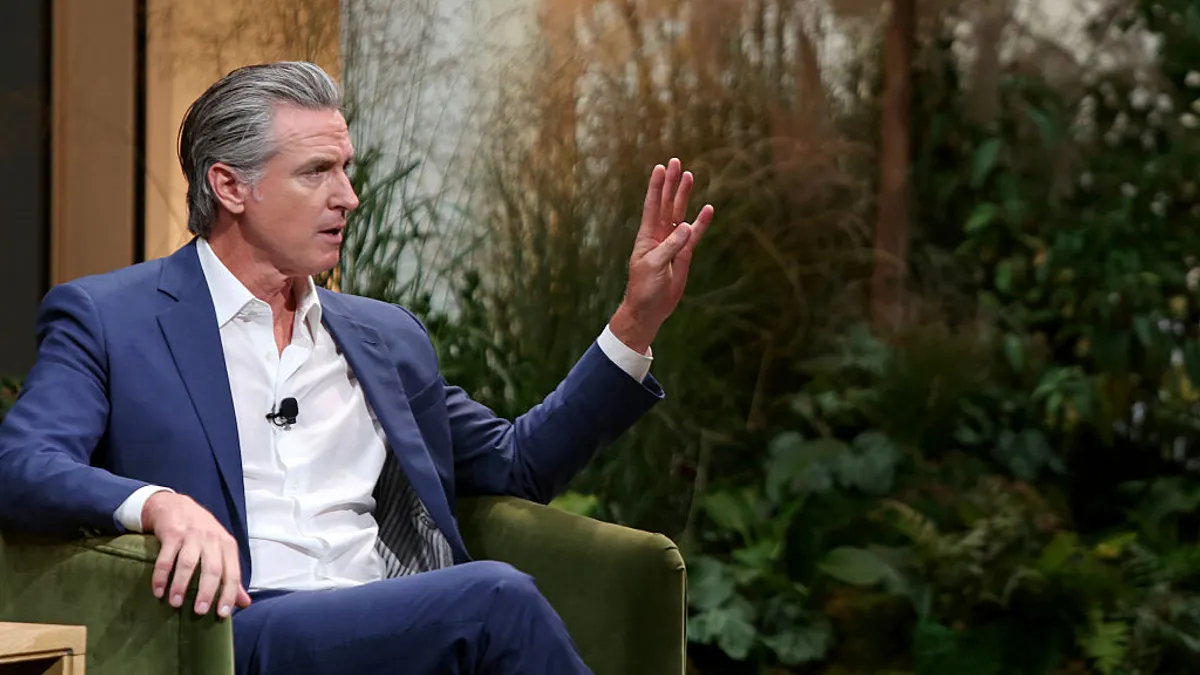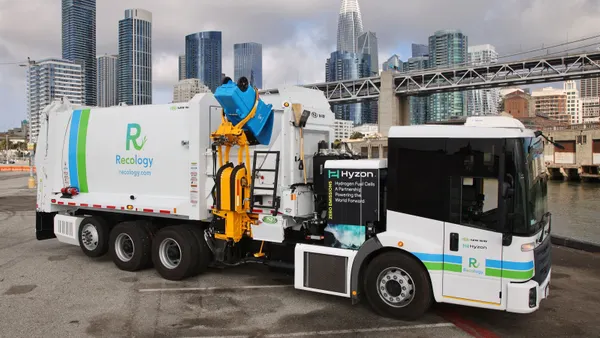When Tara Hemmer took on the role of WM’s chief sustainability officer in 2021, it was the first publicly traded waste and recycling company to create such a position.
In the years since, Hemmer has been vocal about how sustainability investments can boost business by generating cleaner commodities through tech upgrades and by improving labor costs and safety. She also works to highlight WM’s sustainability initiatives to the general public, most recently as a presenting sponsor at a Washington Post Live event on Wednesday.
At the event, Hemmer underscored the role WM must play in combating climate change and discussed how the company has shifted in recent years to focus on broader circularity initiatives. The company plans to invest $1 billion in recycling projects, in part to expand its recycling presence in North America. It also has ongoing investments in renewable natural gas infrastructure and other projects.
Other event speakers included Ali Zaidi, the White House national climate advisor, who discussed the future of electric vehicles and infrastructure, along with chef Rob Rubba and clothing company founder Anne Marie Johnson, who talked about how sustainable business models can reduce food waste and textile waste.
In an interview with Waste Dive after the event, Hemmer said WM plans to stay at the forefront of sustainability innovations while also doing a better job of educating the public about what happens to their waste and recycling.
“We want people to understand that the waste industry, and in particular WM, has evolved so much,” she said. “We want to make sure that the solutions that we bring to the table aren't just relevant, but are cutting edge when you think about where the world is headed.”
This interview has been edited for length and clarity.
Back in April, during WM’s sustainability investor presentation, the company previewed investments in recycling infrastructure projects meant to expand access for markets where WM wasn’t currently operating, particularly areas with a growing population. What’s the latest on those?
In Fort Walton Beach, [Florida], we didn't have a recycling facility there, and no one had a recycling facility there. So this is a great example of bringing new access to recycling infrastructure. With us being at the middle of the hub and spoke, we can work directly with municipalities to offer recycling as a service to their customers and work with commercial businesses. If you think about what happened during the pandemic, you had a lot of people that moved from different areas of the country. Many of them moved to the Florida Panhandle, had recycling as a service at their other locations, and then got to [an area of Florida without those services] and said to their elected officials, ‘What's going on here?’ So it's a great example of expanding access and reach.
Another great example is our Cleveland MRF. We had a much smaller facility in Akron, Ohio, that served a portion of the Cleveland market. But building the new facility in our Cleveland market, we were able to expand capacity and access there.
As a final example, we talk about the investment in single-stream facilities, but what we don’t talk about as much is C&D facilities. One of those facilities that we've brought online is in Nashville. Expanding access and reach of construction and demolition debris processing is very significant for us. This really goes beyond traditional single-stream recycling. That, of course, is a key piece of our automation thesis.
You mention automation and technology upgrades, which are huge investments not just for WM but also most other major waste companies these days. What’s the long-term strategy for how WM invests in recycling technology, especially as materials streams change and the company begins to consider pilot programs for materials that aren’t typically accepted curbside?
A pretty significant portion of the investments that we're making is in our optical sorters. Traditionally you would have maybe two or three optical sorters in a single-stream recycling facility. Now we might have 16 to 20, and those 16 to 20 optical sorters are doing so many different things. Some of them are pulling out paper and cardboard, PET and HDPE natural. We can program them to look at the materials that are in the stream today that have robust end markets, and we can program them in the future to look for materials that could increasingly be important for end markets.
The best example I always use is yogurt containers. It is a small piece of the stream, but for a while there was no end market for it. Well, this is a great example where WM collaborated with the technology providers, the end users who were going to [generate more yogurt containers in curbside streams] and also the CPG companies. We said, ‘If we look for it, will you buy it on the back end?’ And as a result, you know, we've been able to improve the capture of that one commodity type by over 40%, and that’s material that previously would have gone into residue.
From a technology perspective, we also have some select markets where we have robots that really do more finishing work on the back end—picking out materials out of residue, for example— but the great thing that we've been seeing is we're improving the quality of our material and of every commodity type. We're able to capture more material and we're seeing residue rates go down at our automated facilities. Labor costs are down roughly 35%.
You’ve also done some pilot programs for collecting plastic film. What’s the future for that, business-wise, and what role does tech play in those decisions?
As you know, most if not all single stream programs don't allow film, right? But we still get film each and every day coming through our facilities, partly because people still bag their recyclables. We started to work with some partners, including Dow, to say, ‘We’re going to collect that film that's not supposed to be in the stream. If we collect it, will you buy it and market it?’ Now that we've invested in technology in our facilities that can help us pull the film out, we thought, let's try and test this in a community by allowing all plastic to go into the bin there.
The reason why testing this is important is we don't want to have unintended consequences. The worst thing we can do is all of a sudden not be able to capture all of the other commodity types that are extremely valuable. We know that CPG companies are looking for solutions for film and also for flexibles, so this is a great example of how we can be a part of really understanding what might be possible.
Where does chemical recycling fit into WM’s longer-term sustainability plans? WM itself is not a chemical recycler, but you're potentially handling tons of materials that chemical recyclers have expressed interest in.
WM manages materials. Every single one of those petrochemical companies is coming to us seeking some of that material because their customers want a more circular solution to be able to put recycled content back into the products that they put on shelves. By any measure, when we look at the solution set, there's a strong place for mechanical recycling. In the future, there will be a place for chemical recycling.
We also have to look at the emissions impact of mechanical versus chemical. It's clear that mechanical will have a strong role and continued role in the future, and chemical will be a piece that makes sense for the harder-to-recycle streams. We’re in an era where the problems we’re trying to tackle are hard, and how can we drive more strategic partnerships to solve some of these problems?
Where do reuse and reduction strategies come into WM’s sustainability process?
WM doesn't talk about this much, but I think it's one of our greatest stories that needs to be told a bit more. We have an arm of our company that rolls up directly under me called WM Sustainability Solutions. We have [customers] who work at plant locations — think large automotive, large petrochemical, large manufacturing, large distribution centers — and we work with those locations on waste reduction and minimization strategies.
If they have hazardous waste, how do we get that hazardous waste to be nonhazardous? If they have harder-to-recycle materials, perhaps PET strapping from bales, we work with them to find an outlet for that. We've been able to expand our customer base as a result. This is a business that has been in place for close to 20 years and has really been born out of the expertise WM has of what happens with these materials. If we can work with customers on their own waste minimization journey, it’s something that can unlock a lot of opportunity for both of our companies. Pretty much every company is on their own sustainability journey, and waste is a key element of it. It's become really an increasing customer trend for us as the business is growing.


